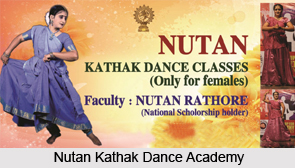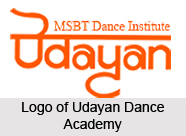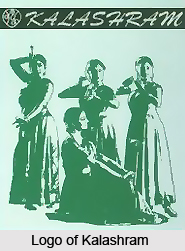Indian Dance Academies have made learning Indian dance much easier, both in and outside India. Moreover, most of these Indian dance academies offer certificate and degree courses to the aspiring dancers, thus making dance a worthwhile career in the nation. They also have contributed immensely to bring forward numerous dancing talents to the national platform.
Styles Taught in Indian Dance Academies
Dance styles taught in the Indian dance academies cover a wide range, starting from the ancient classical to modern, contemporary styles. There are hundreds of Indian folk dances such as Bhangra, Garba and others that are taught in these schools apart from classical dance forms like Bharatnatyam, Kathak, Odissi, Manipuri, etc. India offers a number of classical Indian dance forms, each of which has its origin in different parts of the country. The presentation of Indian dance styles in film, Bollywood, has exposed the range of dance in India to a global audience and many aspiring dancers wish to learn such styles. The Indian dance academies offer the provisions to learn the preferred dance form under the guidance of competent teachers or gurus.
 Method of Learning at Indian Dance Academies
Method of Learning at Indian Dance Academies
Rigorous practice in both theory and practical is required from the students to master the various Indian dance forms. The students are made to learn the guidelines laid down in Natya Shastra by sage Bharata Muni. This ancient text explains the Indian art of performing and states that acting or natya is a broad concept which encompasses both drama and dance.
There are certain Indian dance academies that teach the dance forms related to Gods and Goddesses. For instance some academies of dance in India follow the Shaivite tradition. The students in such academies learn "the lord of dance" that reveals both faces of dance - `lasya` and `tandava`, of which all subsequent dance forms are offshoots.
Famous Indian Dance Academies
Indian Dance academies have evolved with the wave of modernization to not just teach classical and folk dances form only but expand the horizon of their craft further. These dance academies are also training students on various contemporary dance forms and even fusion arts. Besides, students learn certain soft skills like imagination, collaboration, tolerance, group work, communication, etc. Social inclusion is also boosted by dance academies now. Some of these academies that are at the forefront of promoting this culture are listed below.
 Nrityagram
Nrityagram
Nrityagram is a modern academy for Indian classical dances and an intentional community in the form of a dance village, set up by Odissi dancer Protima Gauri in 1990. The academy train dancers to combine performance with community outreach and enthusiasm to take leadership roles.
Kathak Kendra
Kathak Kendra is a heritage school of music, drama and dance that was established by the Sangeet Natak Akademi in 1964. This premier Dance institution is dedicated to promote the practice, development, and awareness of Kathak Dance as a performing art tradition and also as a component of the rich classical heritage of the nation.
 Kalashram
Kalashram
An initiative by Kathak Maestro Pt. Birju Maharaj, Kalashram focuses on imparting training in the field of Kathak & associated disciplines. Besdies teaching Kathak, the north Indian classical dance form, the dance academy also imparts lessons on instrumental music, painting, yoga, Sanskrit, stagecraft, dramatics and so on.
Kalabhavan
Kalabhavan is a unique institution in Kerala that covers a profound curriculum of cultural activities. The institution actively endorses cultural facets as well as discovers new talents and traina existing ones. Carnatic Music, Bongos, Mridangam, Violin, Flute, Bharatnatyam, Mohiniyattam, Folk dance, Kuchuppudi, Guitar, Cinematic dance, Veena, Mimicry, Oil Painting, Tabala and Drums are taught at Kalabhavan.
Mamata Shankar Dance Company
Based in Kolkata, Mamata Shankar Dance Company was founded in 1977 with a small group of young music enthusiasts, forming a choral group along with a few dancers. It was later named as Mamata Shankar Ballet Troupe and now rechristened as Mamata Shankar Dance Company. Founded by famous dancer Mamata Shankar, the daughter of legendary classical dancer Uday Shankar and Amala Shankar, the institution has produced several iconic performances around the world besides imparting lessons on different classical dance forms of India.
Tanusree Shankar Dance Academy
Tanusree Shankar Dance Academy in Kolkata is one of the famous institutions in India for learning both classical and contemporary dance styles. The institution is also renowned for producing and chorographical some of the celebrated dance performances in India and abroad.
Darpana Academy Of Performing Arts
It is a is a school for performing arts based in Ahmedabad, Gujarat, established by Mrinalini Sarabhai and Vikram Sarabhai in 1949. Besides imparting lessons on different Indian classical dance forms, the school organizes workshops and inter-art events.
Sri Thyagaraja College of Music and Dance
This dance school in Hyderabad is one of the top dance schools in India that offer 13 different disciplines focusing on Indian classical dance and music. This college is famous for Kuchipudi dance course.
Nalanda Nritya Kala Mahavidyalaya
This dance school in Mumbai is under the affiliation of the University of Mumbai. It is regarded as the top class institute for performing arts.



















